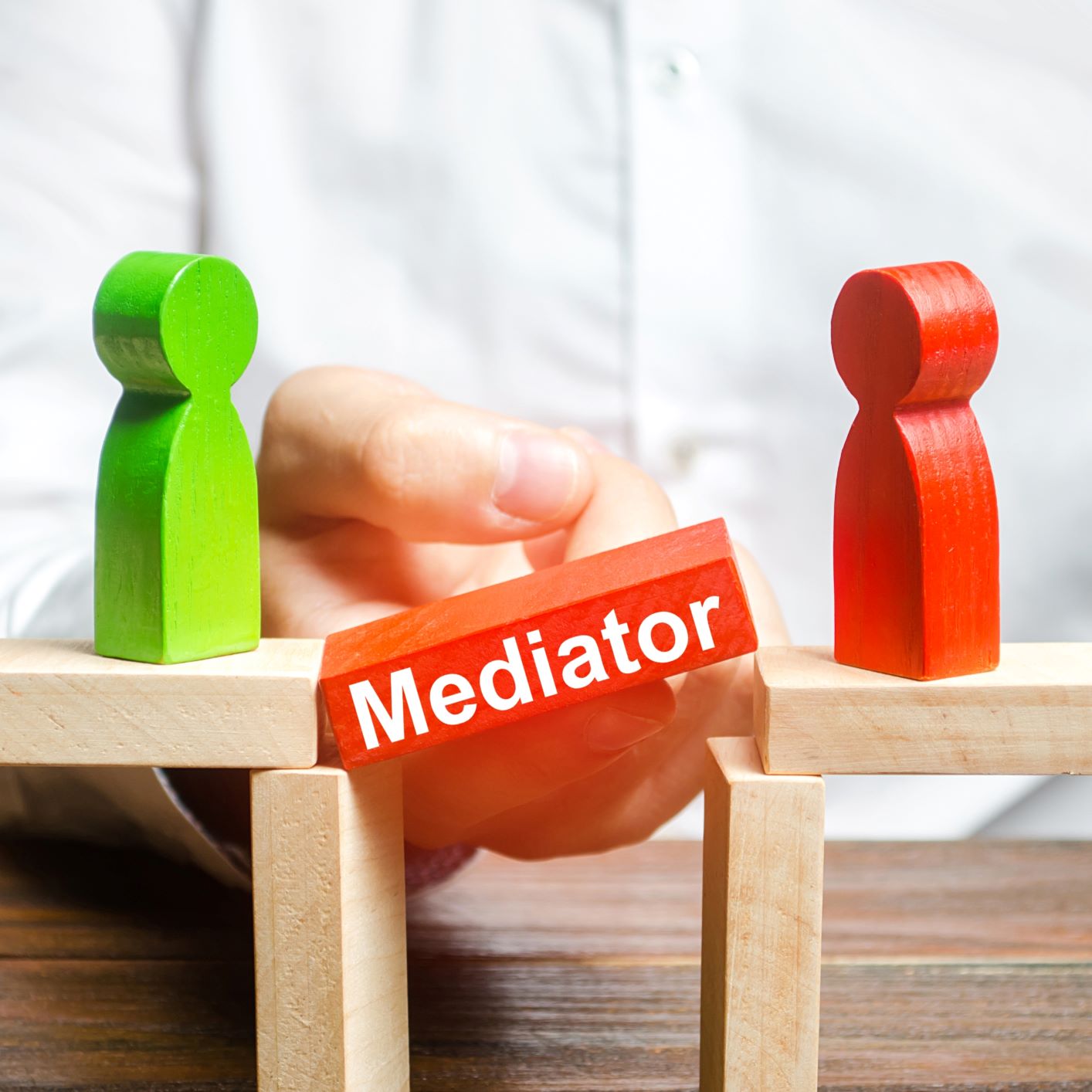Project Manager Tips and Tricks
Amanda Deaton | March 29th, 2021

If the last year has taught us anything, it’s that we are adaptable. From our children virtually learning, to Zoom happy hours with friends, to live-streamed concerts and online conferences, we've voyaged into a virtual existence. And working virtually is at the forefront. Prior to 2020, many companies, large and small, had work from home procedures in place, typically for emergency situations, but now it has become the norm. Companies have learned that employees can thrive, productivity can skyrocket, and that there is a better work/life balance, which leads to improved overall organizational performance.
We have seen companies such as Facebook and American Express institute permanent work from home strategies and I'd be willing to wager that this becomes standard for organizations big and small.
It's the future of business.
As a Project Manager, remote work has presented a slew of challenges. We are used to swinging into someone's workspace to check-in on task progress, conducting in-person status meetings with our clients, hosting project team events, and so on. In-person interactions drove our project execution… and now, to be successful, we've adjusted our management tactics, communication techniques, and our priorities.
Here are tips and tricks we’re using at AWH for effective, remote project management:
1. Ad hoc Zoom. Not all Zoom conversations need to be scheduled. Casual, unplanned Zooms with project team members to ask a quick question or simply check-in can yield positive outcomes, including an improved working relationship (which leads to stronger employee engagement, which leads to quality outputs). Don't be afraid of spontaneous engagement.
2. Communicate the project vision. 'Why is this product being made'. A project vision drives every decision made during the production process, a touchstone for challenging situations. It's easy to lose sight of the 'why', especially when working from home - there is laundry staring at you from across the room, the kids need to be driven to school, the dog needs to go outside. The distractions are endless and once you resume your workday, it's easy to simply focus on the task at hand. Keeping the vision, the 'why' at the forefront is challenging and is our responsibility to continually reinforce.
An easy way to consistently communicate this vision is by reflecting the vision as part of the deliverables you include in your project roadmap. Reviewing the overall roadmap during your recurring status meetings serves as a continual reminder of the vision.
3. Keep an eye on nonverbals. One of the many work-from-home perks is heightened comfortability - all-day pajamas, working from the couch, feet up on the desk. But with the wonderful world of video conferencing, we must step up our game - especially when leading meetings. First, sit up straight. There are studies that show good posture sends nonverbal signals of energy and enthusiasm. Next, smile. I know it's a cliché, but smiling is contagious. Don't believe me? During your next video conference, make it a point to smile often and I will guarantee that you see it returned!
It's also key that we keep an eye on our team members’ nonverbals as they can be reflective of low morale and can demonstrate unusual behavior. As project leaders, it’s important to be aware of these cues and to respond appropriately with personal check-ins outside of your standard meetings.
4. Consistent daily stand-ups. Staying connected with your project team has become increasingly crucial to a project's success as we work remotely. It's easy to lose track of an idea, to get immersed in the weeds, which is why the need for quick resolution on impediments and follow-up to tackle concerns is a must. The 'collaborative ritual' should stick to 3 questions:
• What did you do yesterday?
• What are you doing today?
• What roadblocks are you facing?
Screenshare your Sprint or Kanban board, moving through each team member as they answer the 3 questions. This agenda format helps keep the meetings concise and ensures that the team is aware of progress and issues. Keep the stand-up short and sweet (no more than 15 minutes), to keep energy levels up and distractions at bay. And morning is best, so that everyone is off and running to tackle their day.
5. Invest in the right tools. Give your team what they need to successfully do their job. Distance should not be a barrier to working remotely or why a project team member is unsuccessful. Tools should be collaborative, easy to use, and should ultimately help productivity.
You'll want to ensure all teams have access to the below types of software:
• Meeting scheduling - Outlook, Gmail, Doodle
• Instant messaging / asynchronous communication - Slack, Microsoft Teams, Google Chat
• Video calls and meetings - Zoom, Slack, Microsoft Teams
• Documentation repository/storage - Confluence, Dropbox
• Project management - Atlassian, Microsoft Project
And, if you can, adapt a company-wide tool to organize your vision, goals, and to promote growth such as the Entrepreneurial Operating System (EOS). Read more about what it can do for your business here.
6. Change-up your space and encourage others to do so. Take advantage of technology and work away from your standard space. If your day-to-day workspace is your dining room, switch it up and work from your local coffee shop for an afternoon or visit a public park and work outdoors. You'll be surprised at the locations in your community that are WiFi-enabled and, if they're not, you can easily utilize your smartphone as a hotspot. And if you're not comfortable with leaving your home, try your front porch or back deck. A change in scenery can positively impact your mood and likely your productivity.
7. Recognize contribution. Team member recognition is so important to the success of a project. It not only reinforces a team member’s purpose but impacts overall morale and productivity. According to Bonusly, morale is the glue that holds a company together and with low morale, all aspects of a team member’s contributions will suffer – which means your project will suffer.
Two key tips surrounding team member recognition:
• Make it personal – provide the recognition yourself, whether in a tool such as Bonusly or simply with a phone call to the team member.
• Make it immediate – the impact will be at its highest the sooner it happens.
8. Promote accountability. Without the constant face-to-face management of your team, self-accountability is crucial to a project’s success. At the start of the project, always set clear expectations around roles and project responsibilities, one of those responsibilities being accountability. Once that is established, it’s easier for your team to seize ownership of tasks and deliverables, which empowers the team to not only hold themselves accountable but to hold their peers accountable. While PMs are accountable for the project as a whole, having a team of self-accountable people will make your life that much easier. And don’t limit yourself to internal team members – it’s important to hold clients accountable for their deliverables, level of participation, and responsiveness.

Watch for conflict. First, let’s talk about healthy vs. unhealthy conflict. Healthy conflict is an important part of solutions where team members debate issues, problem solve and can express thoughts without fear of shame or bullying. Unhealthy conflict comes into play when team members are overly assertive, talk over, blame, and speak down to team members.
Conflict is going to occur – it’s the nature of any business but it’s how we manage that conflict that can impact our team morale and project success. When in an office setting it’s difficult to ignore unresolved conflict – you’re in a small space, it’s likely you’ll run into the other person in the break room, you can’t escape! But at home, you can hide and it’s our job to ensure that doesn’t happen.
If healthy conflict, allow team members to resolve organically and at the moment as often as possible. This conflict can be key to decision-making and progressing your solution. Use your best judgment as to when a separate conversation is needed.
If unhealthy conflict, halt the conversation as quickly as possible and schedule a separate time to discuss the situation with each individual. This type of conflict will only lead to decreased motivation and potentially team turnover.
Healthy conflict is a direct result of team trust and if that trust doesn’t exist, go back to the basics of team building. There is a great article from Hive on building trust here.
10. Focus on the people, step away from the tactical. As Project Managers, we are charged with the oversight of timelines, budget, and scope (to name a few) and it’s very easy to have tunnel vision in terms of those tactical deliverables. We must make a deliberate effort to take off our tactical hat and regularly replace it with our relationship hat. In my experience, the most important pieces of any project, any team, any business are the people and their engagement. Not just internally, but externally, too. The higher the rate of engagement, the more successful the project.
But how do we focus on the people? How do we pivot from our tactical focus? It must be measured, considered, and most of all a consistent effort. And all 3 are expounded by our relationships being mostly virtual. It must become ingrained in your daily routine. For me, it all started with Patrick Lencioni’s book, ‘The Truth About Employee Engagement, and applying it to all internal and external relationships. It taught me to be a servant leader and how to get the best out of those around me.
For more information on how to become a servant leader, keep an eye out for our next blog, and if you would like to stay up to date on all of our posts, you can sign up for our newsletter here.
